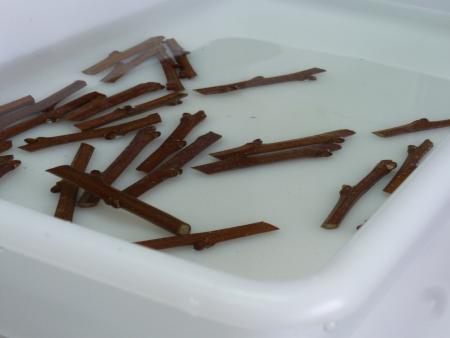Image:

Objective:
The hot water treatment (HWT) was evaluated for pest and disease control, and specifically its use to prevent the spread of the chestnut gallwasp Dryocosmus kuriphilus Yasumatsu in chestnut plants in nurseries.
Start/end date:
Context:
The Asian chestnut gall wasp (ACGW) Dryocosmus kuriphilus (Hymenoptera: Cynipidae), the most severe insect pest for the genus Castanea, was introduced into Europe and dispersed rapidly throughout this continent due to the accidental commerce of infested chestnut material from nurseries, owing to the fact that infestation inside the dormant buds is visually undetectable.
Contacts:
Marta Ciordia Ara, mciordia@serida.org , www.serida.org